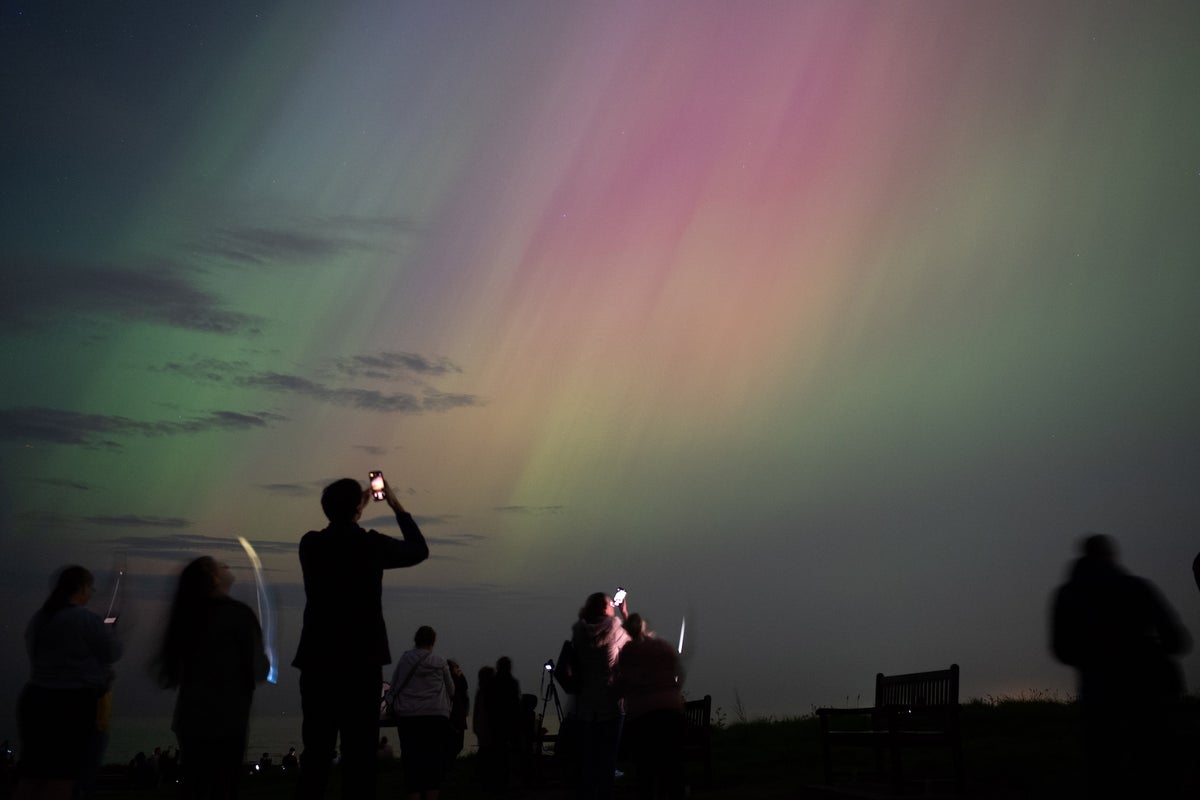Powerful Solar Storm Could Trigger Far-Reaching Auroras across U.S.
The sun just spat out several coronal mass ejections that could trigger a serious solar storm on Wednesday
Join Our Community of Science Lovers!
A powerful solar storm could spark auroras as far south as northern California and Alabama on Wednesday, thanks to a particularly rambunctious area on the sun dubbed active region 4274 (AR4274). In recent days the region has unleashed multiple outbursts, including a solar flare that ranks as one of the most powerful of the current solar cycle.
That dramatic flash of light was followed by a coronal mass ejection, or CME, an event in which the sun propels a giant cloud of magnetized plasma into space. If Earth is in the firing line of a CME, it can wreak havoc on our planet in a range of phenomena referred to as space weather. AR4274 is aligned such that its material is heading toward Earth—at some 3.3 million miles per hour, no less. Along the way, it could catch up and join forces with two previous, slower CMEs that occurred on Sunday and Monday.
In response to the outbursts, the National Oceanic and Atmospheric Administration’s Space Weather Prediction Center has issued a G4 geomagnetic storm watch for Wednesday—the fourth such alert of the current solar cycle. The scale behind this system runs from one to five, with a G4 watch deemed “severe.” An event of this magnitude can cause potential interference to power grids, spacecraft operations, satellite navigation and radio communications.
If you’re enjoying this article, consider supporting our award-winning journalism by subscribing. By purchasing a subscription you are helping to ensure the future of impactful stories about the discoveries and ideas shaping our world today.
These effects mean that, like terrestrial weather prediction, space weather prediction has been deemed a mission-critical activity that has continued even during the federal government shutdown.
Unfortunately for aurora watchers, the peak of activity is expected to occur during North America’s daylit hours, when any auroral activity will be invisible.
Geomagnetic turmoil is expected to continue into Thursday at a G3, or strong, level, which can trigger auroras as far south as Illinois and Oregon.
Meghan Bartels is a science journalist based in New York City. She joined Scientific American in 2023 and is now a senior reporter there. Previously, she spent more than four years as a writer and editor at Space.com, as well as nearly a year as a science reporter at Newsweek, where she focused on space and Earth science. Her writing has also appeared in Audubon, Nautilus, Astronomy and Smithsonian, among other publications. She attended Georgetown University and earned a master’s degree in journalism at New York University’s Science, Health and Environmental Reporting Program.
If you enjoyed this article, I’d like to ask for your support. Scientific American has served as an advocate for science and industry for 180 years, and right now may be the most critical moment in that two-century history.
I’ve been a Scientific American subscriber since I was 12 years old, and it helped shape the way I look at the world. SciAm always educates and delights me, and inspires a sense of awe for our vast, beautiful universe. I hope it does that for you, too.
If you , you help ensure that our coverage is centered on meaningful research and discovery; that we have the resources to report on the decisions that threaten labs across the U.S.; and that we support both budding and working scientists at a time when the value of science itself too often goes unrecognized.
In return, you get essential news, captivating podcasts, brilliant infographics, , must-watch videos, challenging games, and the science world’s best writing and reporting. You can even gift someone a subscription.
There has never been a more important time for us to stand up and show why science matters. I hope you’ll support us in that mission.
Thank you,
David M. Ewalt, Editor in Chief, Scientific American
Source: www.scientificamerican.com
